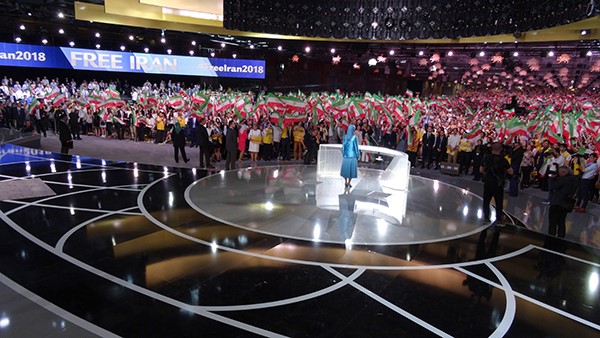

The people of Iran have been suffering for decades under the rule of the corrupt mullahs who have been plundering the nation’s wealth while the people are getting poorer and facing further hardship over the past 40 years. The widespread corruption is clearly present at all levels of the country’s leadership and Iran’s economy is deteriorating and purchasing power is declining.
Last year, Iran has seen many strikes and protests that started in December 2017 and continued throughout 2018, and their momentum maintained by the people of Iran even in the year 2019. In their protests, the Iranian people clearly showed their discontent with the ruling regime, and the fact that they hope for regime change is not a secret.
The Iranian people are fed up with the regime’s policies of prioritizing malign adventures abroad over the needs of the people and they are rejecting the government’s performance and socio-economic failure. Yet, the reactionary regime, unable to improve their economic hardship, refuses to respond properly to the people’s need, but instead passes the blame off on foreign powers.
For nearly 10 years, every year, the mullahs traditionally line the streets in Iran’s capital city on December 30 to make public their celebration of the people’s failure to topple the regime during the 2009 uprising.
However, the atmosphere is markedly different this year and the mullahs can no longer ignore, suppress or dismiss as insignificant the widespread strikes and protests by various strata of Iranian society who are demanding their basic rights in many cities across the country. The people’s determination for democratic change and their support of the Iranian opposition to topple the ruling regime have changed many factors.
The Iranian regime would usually downplay these critical situations and try to portray normal even in the face of popular protests and uprising, but the mullahs are getting to a stage where they can no longer ignore the people’s discontent.
A member of the regime’s parliament, Jahanbackhsh Mohebinia, described the past year’s climate as “eventful” and warned that “there will be a catastrophe” in the coming year.
Gholam Ali Jafarzadeh, another member of the parliament, issued a warning about the spread of the uprising and said: “When the poor are seen as a group of wronged and oppressed people, other strata of the society [the middle class] can identify with them and provide them with opportunities to further spread.”
The mullahs seem to be more than aware of the fact that the people’s ultimate goal is regime change. They know that there is going to be further protests across the country in the coming months and they are not hiding their fear of popular uprising and the fact that they have to face the consequences of their enmity and mistreatment of people.
In this regard, Mullah Ahmad Alamolhoda, the regime’s Friday prayer leader in Mashhad, admitted: “This story isn’t the story of 2009. This story is much stronger and is the story of us now.”
He explicitly acknowledged the people’s attempts to “topple the Velayat-e faqih” regime and said: “The Supreme Leader has recently stated that the enemy is paving the way in 2018 and wants to see its results in the 2019 revolt. Ten years have passed since the 2009 revolt, and the enemy wants to enter an arena where they could exactly repeat the 2009 revolt in 2019.”
The year 2019 is going to be defining Iran and its leadership. The Iranian people have come so far in their struggle for freedom, democracy and the respect of human rights and there is no chance of the people relenting in their efforts for democratic change in Iran. This is evident even through the simple fact that the regime acknowledges the popular discontent and unrest instead of denying them as it has done in the past.

